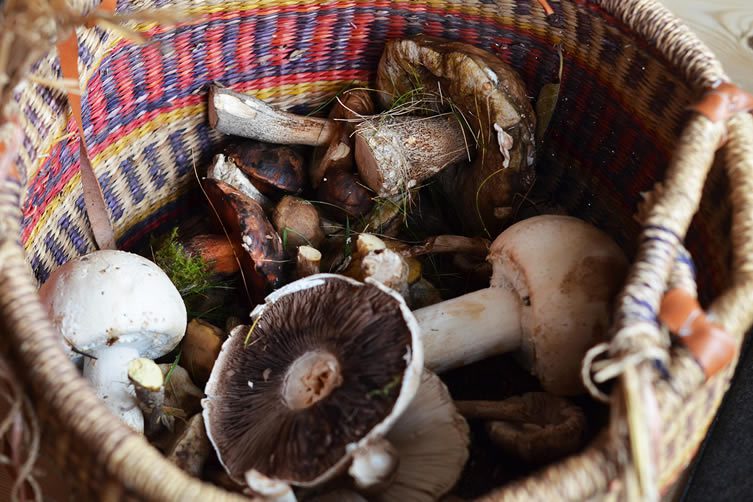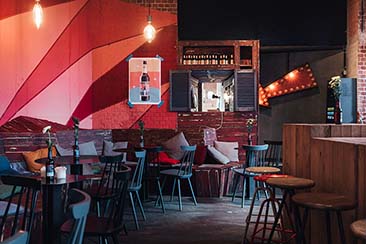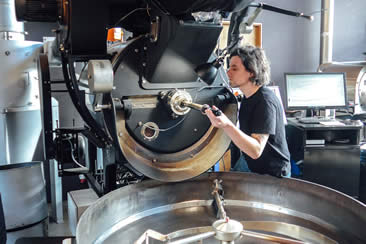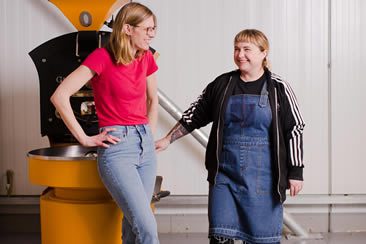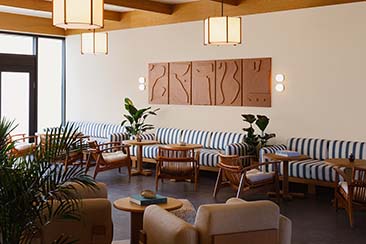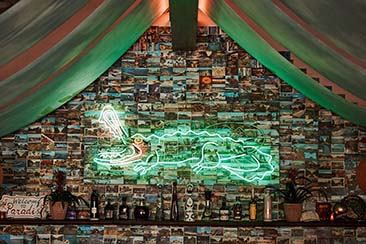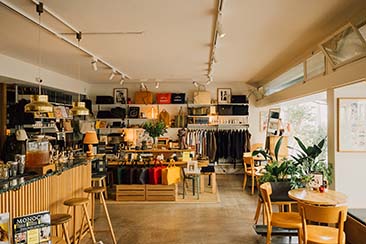For many of us, the wild is an escape; a source of beauty with its infinite bounty. The green spaces that surround the urban landscape are essential in maintaining some sort of sanity away from cars, skyscrapers and — often — people. Some of us are familiar with it, heading to the park or local wood for walks and bike rides, listening to birds or collecting leaves. Yet some of us are making it a full time occupation, to learn how to utilise the fruits of the wild into everyday edibles.
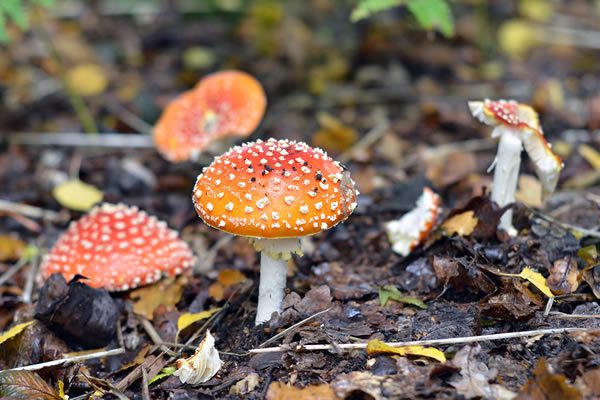
Enter foraging and preservation. We’ve been here before, I’m not talking life before supermarkets or even when we lived in caves, I’m talking about the past ten years. Some celebrity chefs, extreme adventurers and restaurants have been going back to the wild to harvest what freely grows and lives in fields, hedgerows, woodlands and sea. En-vogue, and tremendously addictive — once you know how, finding berries or mushrooms that can be safely consumed is a hugely satisfying thing. Preservation is the ‘old new’, people all over the world have been making jams and chutneys with surplus of produce for centuries … but a new wave of individuals are going beyond, making heavenly syrups from Douglas fir, wild yarrow, mugwort beer and hogweed salt. Never heard of those? Nor had I. (There is so much more on The Foragers‘ blog if you want to delve deeper into the world of foraging.)
We last spoke to The Foragers back in late 2012 — they’d just taken over the kitchen at The Verulam Arms in St. Albans, and were collaborating with The Dead Dolls Club in London … Fast-forward to the present, and they’re back — dividing their time between two locations to show us what the wild really has to offer. Armed with more wisdom and experience, founder George Fredenham and his brand new sidekick and master bushcrafter, Richard Osmond, are here to share their love of the wild; and to show us what’s out there and what to do with it.
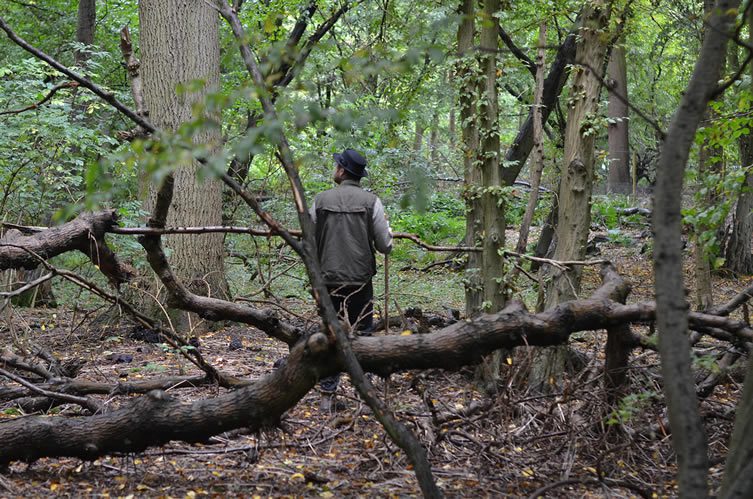
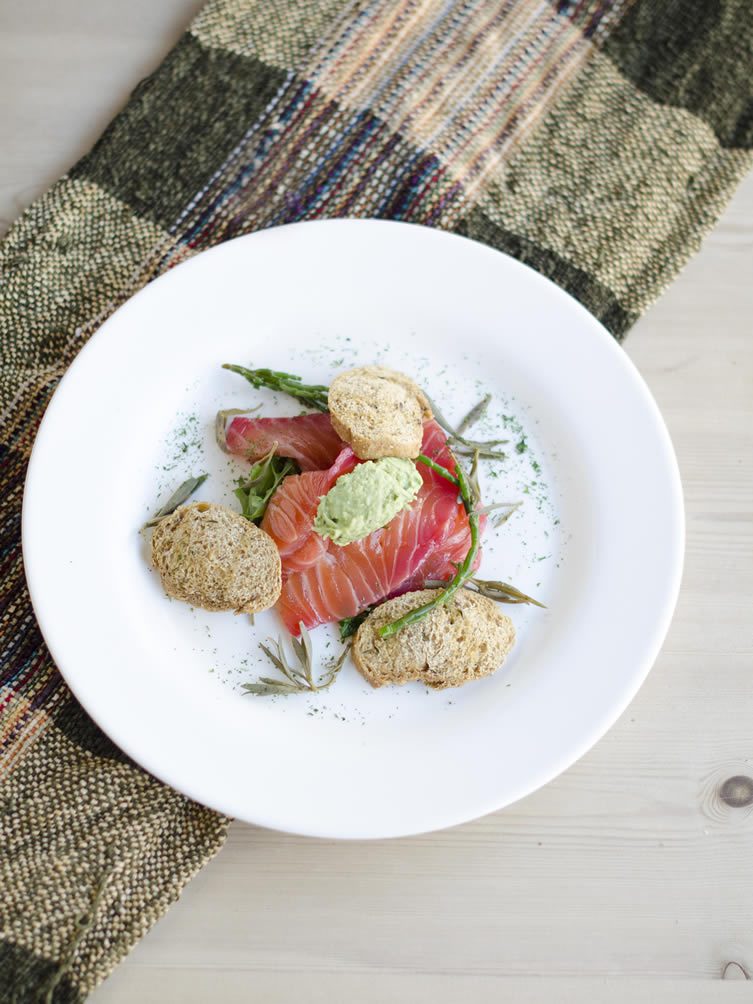
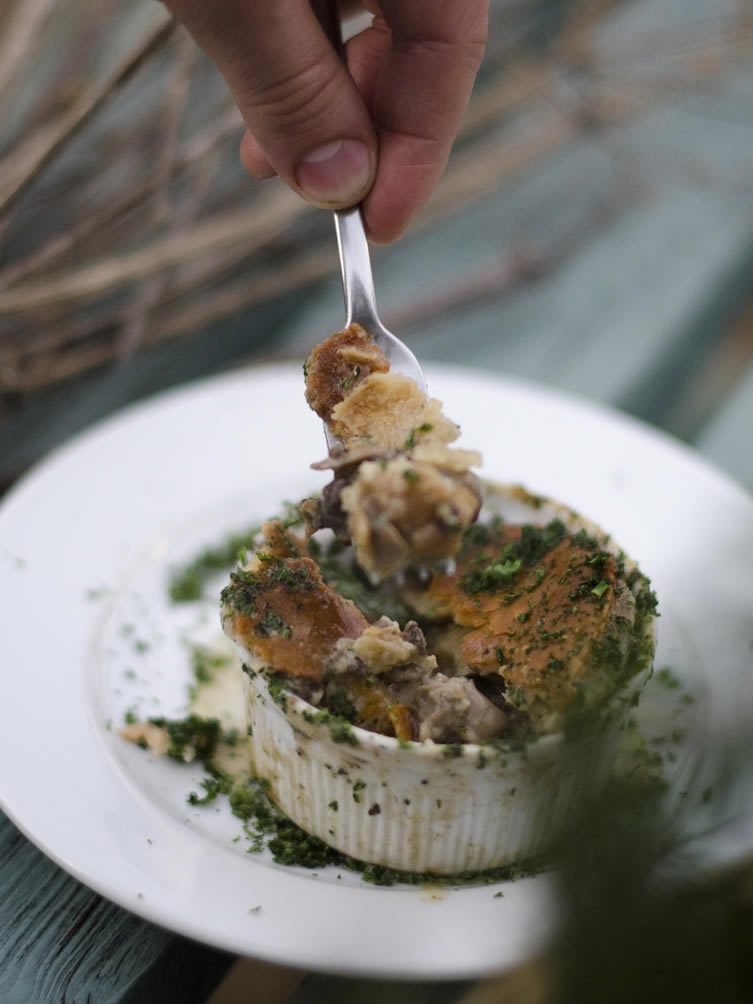
George, what’s changed in three years?
During our time in London we constantly tried to shape our offer to what we thought people wanted, which ended up being quite challenging … and not always successful. In the end we regrouped and just decided to do what excited us, and luckily people seem to like The Foragers best when we are having fun in the wild; doing what comes simply and naturally.
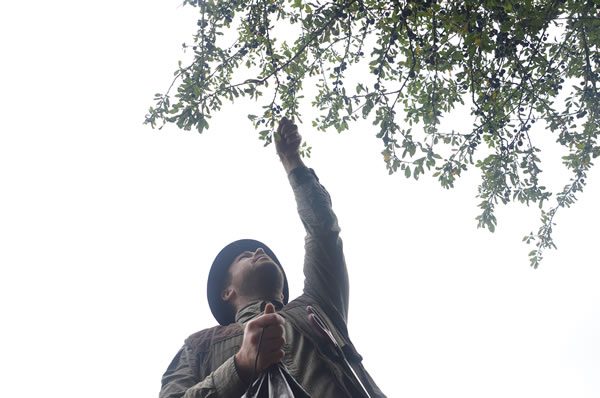
Richard, tell us about yourself, your role at The Foragers, and your credentials …
I had been an amateur mushroom forager for many years before joining the team. Since then, my knowledge has grown exponentially just from being out in the wild every day. Academically my background is in literature, with a particular focus on medieval and old English; which is where a lot of the folklore and traditional herbal we incorporate comes from. I was always a keen homebrewer, and seized the opportunity to turn The Verulam Arms into a brewpub; so I’m now in charge of designing and brewing all our wild beers.
So what’s new at the Verulam? We hear you might be stocking more craft beers than you have chairs …
GF: We’re always trying to make our drinks offer more interesting, and that includes our large boutique spirits range, our dozens of draft craft beer lines, real ales (brewer on site), ciders, and over 50 wines. Our drinks list is never long enough, so we’re always tempted to add more products; even if we are running out of space on the bar.
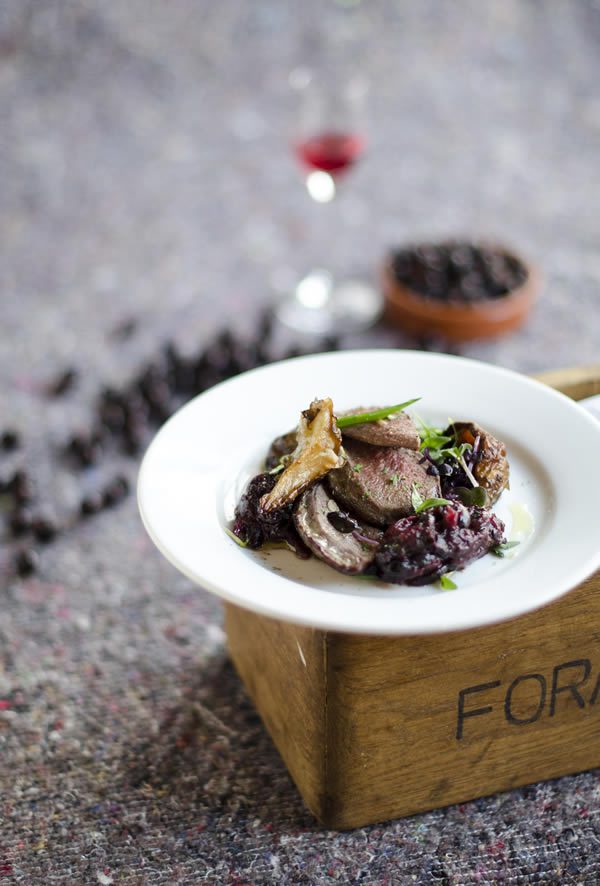
The new London HQ sounds interesting, why did you decide on the Bootyard in Dalston?
GF: We’d been noticing more people making the trip out to St Albans from East London, where there’s clearly a lot of demand for new food experiences. So we thought it was time to bring some wild to the city. The Bootyard suited us very well — very back to basics, with only a campfire for cooking. What more could you ask for?
You make your own wild booze, even homemade British absinthe, can you tell us about some of your liqueurs and concoctions? Where did the recipes come from, and how did you develop them?
RO: There are a lot of wild herbs and plants that we find which have incredible aromas and flavours, but aren’t exactly food. Grand Wormwood, for example, is incredibly bitter — no one would want it in his or her food, but it tastes amazing when mixed with fennel, sweet cicely and lemon balm in our cold-infusion absinthe. It’s a great way of trapping and showcasing the freshest aromas of the wild.
A big part of our job is being outside using our senses to identify wild plants, and the purity with which alcohol is able to extract aroma allows us to bottle that experience and share it with our customers. Mars Silvanus, our wild forest liqueur is a perfect example of this — with the spicy clove aromas of wood aven root, the herbal bitterness of yarrow and mugwort, the tannic quality of birch and cherry bark, and the soft sweetness of wild cherries; taking a sip really is like a full day walking in the forest.
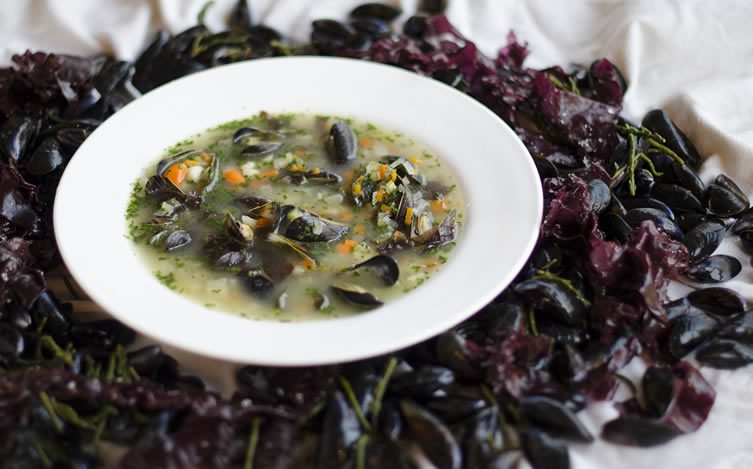
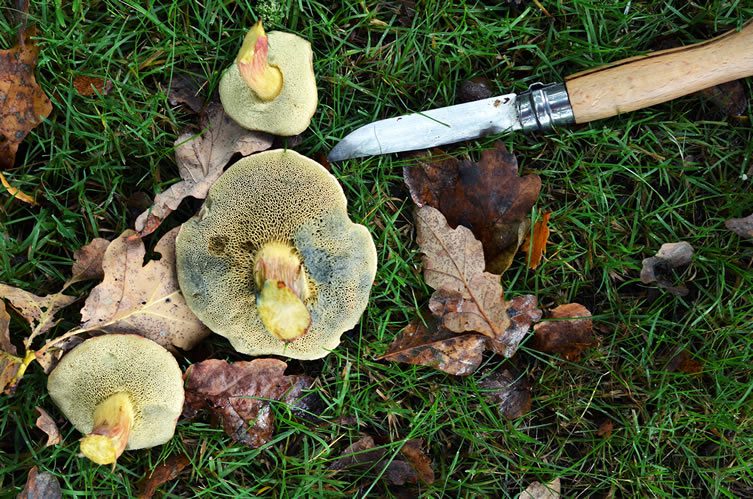
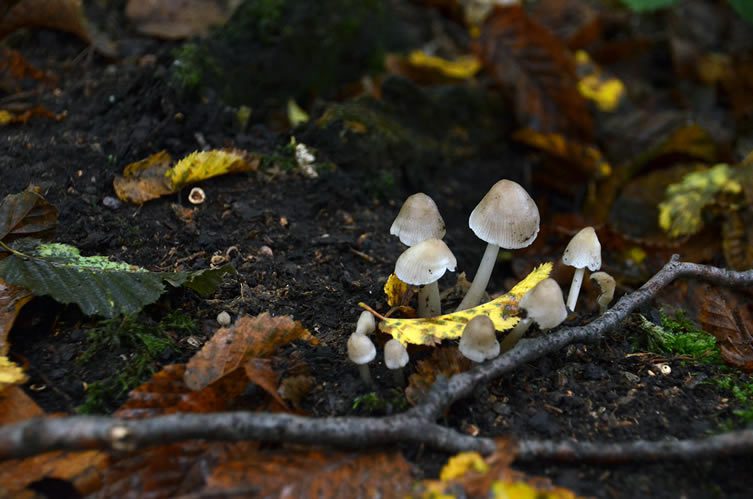
I really like the idea of escaping the city on one of your foraging adventures in Hertfordshire, what are people likely to expect?
RO: You’ll meet The Foraging bus at our London HQ in Dalston at 3pm, from there we’ll whisk you away from the city for an eye-opening tour of the Hertfordshire hedgerow. We’ll explore some of our favourite foraging locations, and lead a guided walk — teaching you the basics of how to find, identify and prepare wild food.
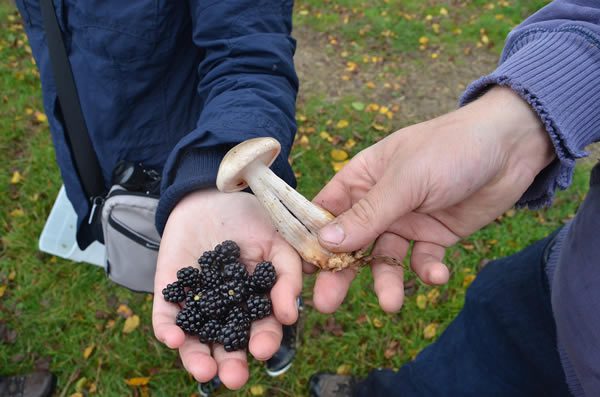
Once you’ve worked up an appetite, we all head back to The Verulam Arms in time for a feast at about 7:30pm — you’ll get the chance to try the best of the wild food we use at the pub, and to taste many of the wild plants you encountered on the walk. When you’ve had your fill, it’s back on the minibus to London; where we’ll drop you back at our HQ in Dalston by 11pm. Ticket price includes transport, the walk and an epic feast at our Wild Food Pub.
What are your favourite finds, and why?
GF: For me, the best forages are in spring, when all the spring greens start to appear. After months of the landscape being barren, there’s nothing better than walking into a wood and smelling the fresh garlicky smell of juicy green ramsons crushed underfoot.
Can you tell us abut some of the interesting characters you’ve met since being a part of The Foragers?
GF: Bruce is a hunting legend. As well as hunting a huge amount of our meat, he rides around Hertfordshire like an absolute pimp in a big red truck with deer antlers on the hood. Also Frank, he is a regular of ours. He is a sculptor and artist. Being Scottish, he is always the first to don his kilt and sporran and address our wild haggis. He is also St Albans’ premier Father Christmas, and can often be seen relaxing at the pub in full red and white furry splendour with a pint of our house-brewed ale in hand.
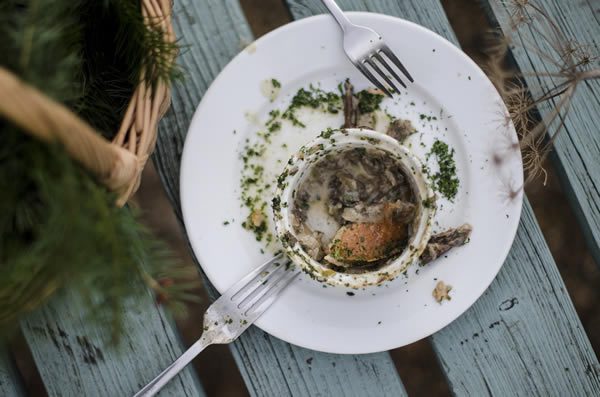
Can you tell us a bit about preservation? Why is it important?
RO: Foraging is highly seasonal, and hugely dependent on luck. So that our menu doesn’t suffer the ups and downs of the foraging life, we have to find stable ways of incorporating the unstable wild, day-to-day. Instead of us having to rush out daily for fresh ingredients, we find ways of bulk-preserving. We make pickles and chutneys, we dehydrate and freeze, we smoke and ferment. These challenges aren’t unique to us, of course. It’s only recently that people have been able to rely on produce flown in from Africa and Israel to cheat the seasons. Before the era of the supermarket, the work of spreading the sporadic and seasonal nature of plants over greater lengths of time was key to survival.
What is next for The Foragers?
RO: We’ve got a lot of pots on the stove. We’re in talks to collaborate with a distillery on a full batch of wild absinthe. We’re planning more and more walks and workshops. As I write this I’m sitting in the kitchen of a seaside cottage in the western isles of Scotland, on a research mission to an edible seaweed-laden coast where we’re considering hosting a seaside foraging weekend course later this year.
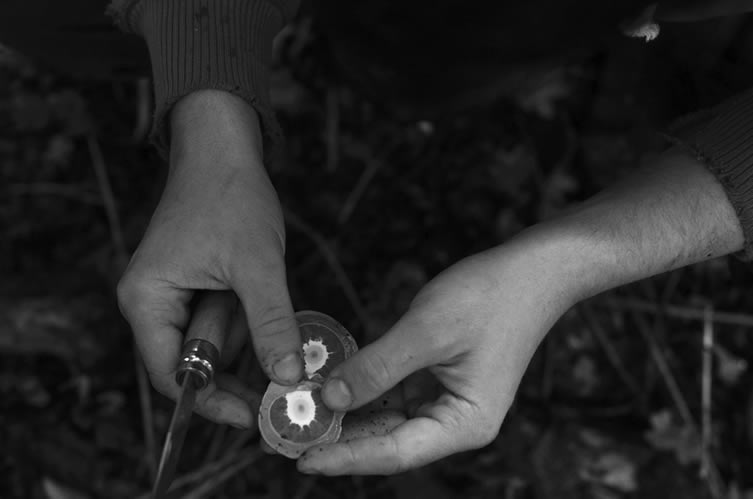
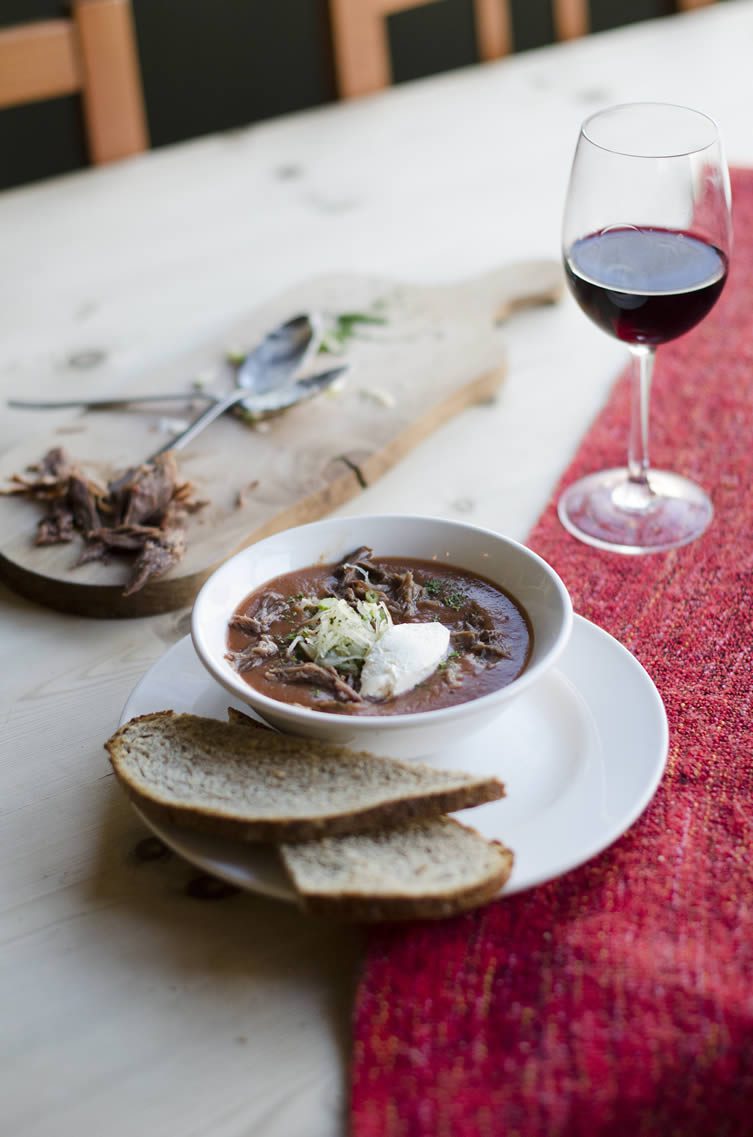
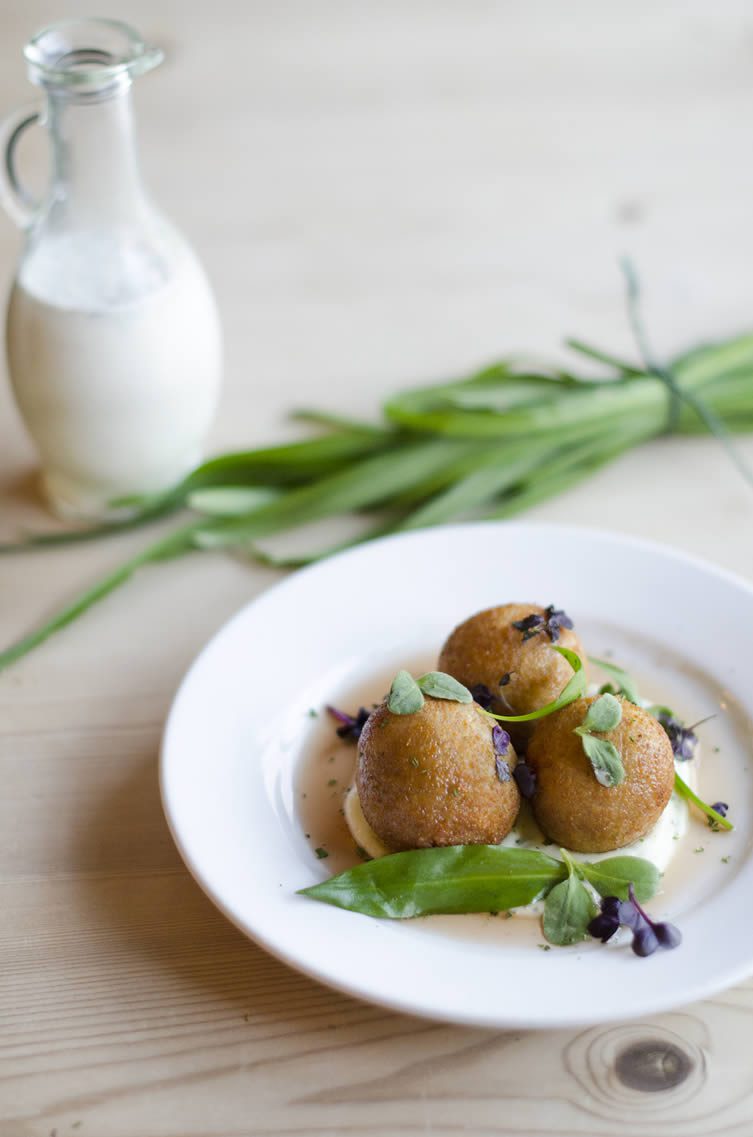
Food photography, Hannah Ranken / Foraging Photography courtesy, The Foragers
